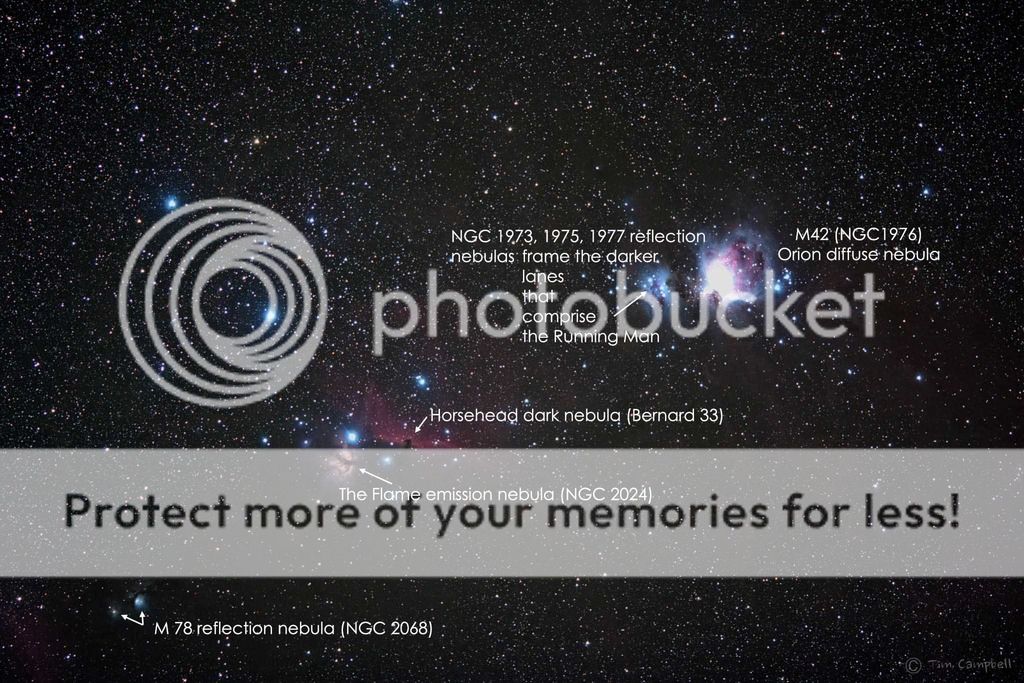TCampbell
Been spending a lot of time on here!
- Joined
- Mar 31, 2012
- Messages
- 3,614
- Reaction score
- 1,558
- Location
- Dearborn, MI
- Can others edit my Photos
- Photos OK to edit
This is a work-in-progress but I didn't want to wait too long to post anything. I'm sure I'll end up reprocessing this image one or two more times before I'm really happy with the result.
The week before last I was in Maui, having been invited out by one of my astronomy friends who has a residence there. Being a local, he also belongs to several astronomy clubs (he belongs to more clubs than anyone I know) and he took my spouse and I up to "Science City" at the top of the Haleakala volcano. This is an area which isn't open to the public (it's where you'd find all the professional and government observatories) but he has access to the area.
The sky from that location is absolutely incredible! Normally when I shoot images there's a lot of residual background light pollution in the images that has to be cleaned up. From this location the images that come out of the camera (unprocessed) actually look like I've spent time cleaning them up because the background is so devoid of light pollution.
I took this using my Canon 60Da astrophotography camera and using an EF 135mm f/2L lens. But the camera is mounted to my new Losmandy StarLapse tracking head. The head allows for fairly precise polar alignment so that it will accurately allow for very long exposure images without getting smeared images due to the rotation of the Earth (movement of the stars in the sky).
To create this, I had to shoot:
10x 2-minute exposures (2 had to be rejected due to movement)
10x 1-minute exposures
10x 15-second exposures
10x 3-second exposures
(I should have taken 10x 1/2 second exposures now that I see the results)
The images were all combined and processed using PixInsight (astrophotography image processing software.)
The region of sky in this image is the lower-half of Orion. You'll see the 3 "belt" stars on the left side of the frame (the image is sideways). The area where you see the very large bright Orion nebula is what you can see with the unaided eye in the region called the "sword" or "scabbard" hanging from Orion's belt. Most people think they see a star that doesn't resolve very clearly -- it's actually a nebula that you can see with the unaided eye. It's impressive even in binoculars or a small low power telescope.

Lower Region of Orion by Tim Campbell, on Flickr
In this image you'll see (from right to left) (1) the Orion Nebula, (2) the Running Man Nebula, (3) the Horsehead Nebula, (4) the Flame Nebula, and (5) a reflection nebula designed Messier 78.
Look closely at the background and you'll notice some muddy textures where the sky background isn't that black. Inspect this carefully and you'll see this is actually made up of massive clouds of dust in space in that area of the sky.
The week before last I was in Maui, having been invited out by one of my astronomy friends who has a residence there. Being a local, he also belongs to several astronomy clubs (he belongs to more clubs than anyone I know) and he took my spouse and I up to "Science City" at the top of the Haleakala volcano. This is an area which isn't open to the public (it's where you'd find all the professional and government observatories) but he has access to the area.
The sky from that location is absolutely incredible! Normally when I shoot images there's a lot of residual background light pollution in the images that has to be cleaned up. From this location the images that come out of the camera (unprocessed) actually look like I've spent time cleaning them up because the background is so devoid of light pollution.
I took this using my Canon 60Da astrophotography camera and using an EF 135mm f/2L lens. But the camera is mounted to my new Losmandy StarLapse tracking head. The head allows for fairly precise polar alignment so that it will accurately allow for very long exposure images without getting smeared images due to the rotation of the Earth (movement of the stars in the sky).
To create this, I had to shoot:
10x 2-minute exposures (2 had to be rejected due to movement)
10x 1-minute exposures
10x 15-second exposures
10x 3-second exposures
(I should have taken 10x 1/2 second exposures now that I see the results)
The images were all combined and processed using PixInsight (astrophotography image processing software.)
The region of sky in this image is the lower-half of Orion. You'll see the 3 "belt" stars on the left side of the frame (the image is sideways). The area where you see the very large bright Orion nebula is what you can see with the unaided eye in the region called the "sword" or "scabbard" hanging from Orion's belt. Most people think they see a star that doesn't resolve very clearly -- it's actually a nebula that you can see with the unaided eye. It's impressive even in binoculars or a small low power telescope.

Lower Region of Orion by Tim Campbell, on Flickr
In this image you'll see (from right to left) (1) the Orion Nebula, (2) the Running Man Nebula, (3) the Horsehead Nebula, (4) the Flame Nebula, and (5) a reflection nebula designed Messier 78.
Look closely at the background and you'll notice some muddy textures where the sky background isn't that black. Inspect this carefully and you'll see this is actually made up of massive clouds of dust in space in that area of the sky.














